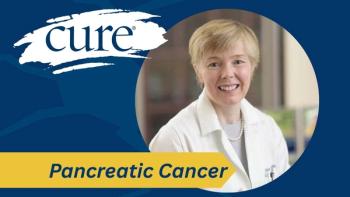
Busting Palliative Care Misconceptions in Cancer Care
Key Takeaways
- Palliative care enhances quality of life by managing symptoms and stress for patients with serious illnesses, distinct from hospice care focused on end-of-life comfort.
- It is appropriate at any illness stage, supporting patients from diagnosis through survivorship, and complements curative cancer treatments.
Often mistaken as a synonym for hospice care, palliative care can be critical for patients with cancer and serious illnesses.
Palliative care can serve a crucial function for patients living with serious illnesses such as cancer, as an expert explained in an interview with CURE®.
“Palliative care is sub-specialized health care for patients living with serious illness, where we're really focused on alleviating the symptoms and the stress associated with illness, and our goal is to improve quality of life for patients and their families,” said Dr. Cari Low of the University of Utah Huntsman Cancer Institute.
Low is an associate professor in the Division of General Internal Medicine and the Medical Director of the University of Utah Supportive and Palliative Care Program.
“We know that cancer really affects all aspects of your life, so we are a great big team of doctors, nurses [and] social workers who really work alongside and in collaboration with your oncology team to be another layer of support,” she noted.
However, some misconceptions persist regarding palliative care — most prominently that it is synonymous with hospice care. Both sub-specialties of care, Low explained, are types of supportive care focused on quality of life and symptom management.
“I really think of palliative care as appropriate for any age of illness,” Low said. “We follow patients from the time of diagnosis through their curative cancer treatment and throughout their journey and into survivorship. And while we hope that every patient's cancer journey does move into that survivorship phase, we are aware that not everybody has that cancer journey, and so that's where hospice comes into play. Hospice is really focused on end-of-life care and comfort when cancer treatments no longer make sense. So, I really think of palliative care as this great big umbrella of support throughout the entire journey, where hospice is just a tiny piece of that umbrella.”
Palliative care is intended to be administered in concert with curative-intent cancer treatments, according to Low.
“Our job is to work in parallel with curative cancer treatment,” she said. “… We have patients who say, ‘Oh my goodness, if I get palliative care, I'm not able to get those disease-directed therapies and chemo and treatment that we're hoping for,’ [and that is] totally a misperception. Again, we work alongside that. And I say we help you do better through chemo and your treatment. If your symptoms are better, your pain is better, you're going to feel well and do better through treatment.”
Palliative care teams are responsible for three primary things, as Low explained.
“The first is really treating the symptoms associated with cancer and its treatment — those may be physical, they may be things like nausea, vomiting, pain, poor appetite and fatigue, or emotional things like grief, depression and anxiety,” she said. “And our job is to treat all of those so patients can live well, feel well and do the things that bring them joy. If you feel well, you do better through treatment. And our job is to help people live well through hard things.
“I think the second piece of what we do is understand these are really complicated systems to navigate. Patients oftentimes have multiple healthcare providers and multiple specialists and are receiving information from lots of different places, and it can be so overwhelming, so our job is really to distill that information and make sure patients are getting what they need in the way they need it so that they can make the right care decisions for themselves. And I think that leads into the final piece of what we do. Our job is to help patients navigate those treatment decisions and make sure that the care really aligns with what's most important to them.”
For more news on cancer updates, research and education, don’t forget to





